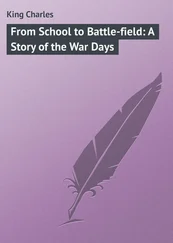To save face, the Ukrainian authorities carried out the so-called stage one of the antiterrorist operation, which they considered a success. Getting Ukrainian checkpoints closer to Slovyansk was to be its accomplishment.
At the same time, Ukrainian forces were supposed to retake Sviatohirsk from the separatists, although when I had gone there two days earlier, the Ukrainian flag was there but not a single armed person. There was no published information that “ownership” had changed hands. So whom did the Ukrainian troops fight? Probably nobody. Kiev had joined the propaganda war started by the Kremlin. Without blinking an eye many Ukrainian journalists decided to give up accuracy for “righteousness.” The group who believes that “you can only win by telling the truth” is in the minority even today and has no impact on Ukrainian media accounts.
Fighting against Kremlin propaganda is a daunting task, if you consider the means, expertise, and structures at Russia’s disposal. In Ukraine the media represent the interests of their wealthy owners, but now the state has an exceptional opportunity to fit information to its needs. Ukrainian journalists soon lost the opportunity to visit the separatist-controlled territories, so they had to rely mainly on reports published by state organs that very often were simply false.
The Security Service of Ukraine announced that the separatists’ checkpoint on the road to Kharkiv had been captured. I decided to check this out. When I arrived I noticed that nothing had changed: separatists with rifles were controlling the traffic. When I approach them to find out what has happened here, I meet with the nervous reaction of a man in a Berkut uniform and police helmet. As I learned later, his nickname was “Lynx.” The same name was visible on his license plate of his car. Supposedly, Lynx served in the Ukrainian special forces.
“Who are you?!”
“A journalist from Poland,” I reply.
“Who sent you? Do you have a press pass?”
“What press pass?”
“From the SSU.”
In response I shook my head. Before I even uttered that such a thing didn’t exist, I heard:
“Sit here and don’t move. We saw how you presented the events on the Maidan. We don’t trust you.” He walked to our car with two photographers and a taxi driver inside. Meanwhile, I sat down next to two other armed “berkuts.” They were not eager to talk.
“You have my permission. You can do interviews and take pictures,” said Lynx when he realized that there was nothing interesting in the car. Once again I tried to find out something more about the allegedly captured post.
“Did any clashes take place here?”
“Two days ago, only not here, but a few kilometers away.” Lynx is talking about burning checkpoints near Khrestishche. “Today some Ukrainian personnel carriers were nearby, but they left. There was no fighting.”
Similarly incomprehensible events took place at the TV tower located between Slovyansk and Kramatorsk. The tower was, at least symbolically, a critical point in the information war between the two parties. The militants were disconnecting Ukrainian stations, and Ukrainians were disconnecting Russian stations. The tower would change hands, but without serious clashes. After disconnecting the opponents’ TV, soldiers would simply go away.
Leaky Blockade
At last the Ukrainian forces began the blockade of Slovyansk. Checkpoints of the Interior Ministry and Defense Ministry forces were placed mainly north and west of the city. Journalists went there immediately, just to see whether it was true.
We have arrived at a checkpoint north of Slovyansk. National Guard troops, including snipers, police, and the armored carriers are stationed there. We are about to leave, when one of the policemen shouts, “Move over!”
A man dressed in black is walking toward the checkpoint. He is wearing a bulletproof vest and a strap across his shoulders. From the distance you cannot see what is attached to it. “It’s a machine gun,” claims one of the policemen and instantly the atmosphere gets tense. What was hardly visible, too, was the press ID, partially covered by his shoulder strap. It soon turned out that he was a journalist from Russian LifeNews who had decided to “pay a call” to the police.
“Please, stop!” shouts the uniformed man. The journalist keeps walking. After the next warning he stops and… kneels down. The officers approach him and check his documents. When it becomes clear that there was no gun attached to his strap but just a regular bag, they let him stand up and he goes free.
Together with the other journalists who had been inspected at that checkpoint I wondered what was the purpose of this incident. The explanation came a few hours later when LifeNews broadcast some footage shot by a cameraman who oddly enough had been standing a few hundred meters away from the checkpoint, recording the whole event. The viewers learned that the journalist had been forced to the ground to be denigrated, and threatened with a weapon, although “he was not doing anything illegal.” Indeed, the footage was edited in such a way that it looked like the “Kiev junta” officers were harassing the journalist only because he was Russian.
The blockade began on April 24, and the way it was carried out was rather peculiar. When I arrived in the city a week or so before the blockade, the situation was more peaceful, but there were no trains going through Slovyansk. Once the blockade began, they were running again. It turned out that, before the blockade, they had not been running because the separatists blocked the tracks. What for? Perhaps they were afraid that Ukrainian soldiers would be redeployed along this route.
Actually, life in “blockaded” Slovyansk didn’t change. All the shops were supplied as before and there were no problems with ATM machines and banks. In the restaurants you could order any meal from the menu. If someone didn’t have to leave the city, he wouldn’t even notice that something had changed. Even “greens” were less visible in the streets—either they were staying in their bases or they were dispersed on the outskirts. The only difference is the increased air traffic over the city. Leaflets are dropped from the helicopters. The residents are informed about the antiterrorist operation and warned not to aid “terrorists.”
“I wouldn’t touch them. People say they are contaminated,” one resident tells me, when I pick up a leaflet that has landed in a tree. It is a popular rumor spread by separatists that this is the way the Ukrainian forces want to finish off the locals. The militants eagerly shoot at the helicopters, occasionally bringing them down or damaging them.
The checkpoints of the Ukrainian forces blockading the city look very serious. They are not just some concrete blocks piled up at random and guarded by poorly armed men. There are armored personnel carriers, National Guard, and police units. They are all in defensive fighting positions. Every now and then the helicopters land, bringing provisions. But instead of actually blockading the city, they simply control the passersby. Anybody can move in and out of Slovyansk without any problems.
Slovyansk is a strategically important location, because it offers the easiest passage to the Kharkiv region. When Ukrainians deployed their forces there, the militants captured new sites in other parts of Donbas. In April and June in the Donetsk and Luhansk regions they took control in Alchevsk, Amvrosiivka, Antratsit, Artemivsk, Avdiivka, Druzhkivka, Dzerzhinsk, Khartsyzk, Komsomolsky, Kostiantynivka, Krasnoarmiysk, Krasnodon, Krasnyi Luch, Lysychansk, Makiivka, Mariupol, Novoazovsk, Pervomaysk, Rodinsky, Severodonetsk, Siversk, Stakhanov, Stanytsia Luhanska, Starobesheve, Sverdlovsk, and Zdhanov. In the majority of cases the cities and towns were captured without any fighting. Control over the Ukrainian-Russian border was given up, too, and this very abandonment will turn out to be the biggest tactical mistake of the Ukrainians.
Читать дальше

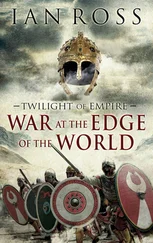
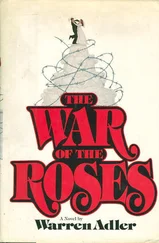
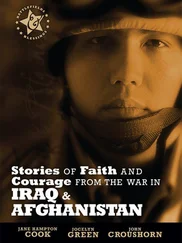
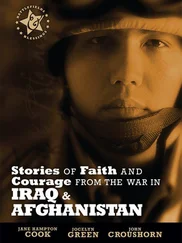



![Theresa Cheung - The Dream Dictionary from A to Z [Revised edition] - The Ultimate A–Z to Interpret the Secrets of Your Dreams](/books/692092/theresa-cheung-the-dream-dictionary-from-a-to-z-r-thumb.webp)



